LensCrafters 2015 Annual Report Download - page 191
Download and view the complete annual report
Please find page 191 of the 2015 LensCrafters annual report below. You can navigate through the pages in the report by either clicking on the pages listed below, or by using the keyword search tool below to find specific information within the annual report.-
 1
1 -
 2
2 -
 3
3 -
 4
4 -
 5
5 -
 6
6 -
 7
7 -
 8
8 -
 9
9 -
 10
10 -
 11
11 -
 12
12 -
 13
13 -
 14
14 -
 15
15 -
 16
16 -
 17
17 -
 18
18 -
 19
19 -
 20
20 -
 21
21 -
 22
22 -
 23
23 -
 24
24 -
 25
25 -
 26
26 -
 27
27 -
 28
28 -
 29
29 -
 30
30 -
 31
31 -
 32
32 -
 33
33 -
 34
34 -
 35
35 -
 36
36 -
 37
37 -
 38
38 -
 39
39 -
 40
40 -
 41
41 -
 42
42 -
 43
43 -
 44
44 -
 45
45 -
 46
46 -
 47
47 -
 48
48 -
 49
49 -
 50
50 -
 51
51 -
 52
52 -
 53
53 -
 54
54 -
 55
55 -
 56
56 -
 57
57 -
 58
58 -
 59
59 -
 60
60 -
 61
61 -
 62
62 -
 63
63 -
 64
64 -
 65
65 -
 66
66 -
 67
67 -
 68
68 -
 69
69 -
 70
70 -
 71
71 -
 72
72 -
 73
73 -
 74
74 -
 75
75 -
 76
76 -
 77
77 -
 78
78 -
 79
79 -
 80
80 -
 81
81 -
 82
82 -
 83
83 -
 84
84 -
 85
85 -
 86
86 -
 87
87 -
 88
88 -
 89
89 -
 90
90 -
 91
91 -
 92
92 -
 93
93 -
 94
94 -
 95
95 -
 96
96 -
 97
97 -
 98
98 -
 99
99 -
 100
100 -
 101
101 -
 102
102 -
 103
103 -
 104
104 -
 105
105 -
 106
106 -
 107
107 -
 108
108 -
 109
109 -
 110
110 -
 111
111 -
 112
112 -
 113
113 -
 114
114 -
 115
115 -
 116
116 -
 117
117 -
 118
118 -
 119
119 -
 120
120 -
 121
121 -
 122
122 -
 123
123 -
 124
124 -
 125
125 -
 126
126 -
 127
127 -
 128
128 -
 129
129 -
 130
130 -
 131
131 -
 132
132 -
 133
133 -
 134
134 -
 135
135 -
 136
136 -
 137
137 -
 138
138 -
 139
139 -
 140
140 -
 141
141 -
 142
142 -
 143
143 -
 144
144 -
 145
145 -
 146
146 -
 147
147 -
 148
148 -
 149
149 -
 150
150 -
 151
151 -
 152
152 -
 153
153 -
 154
154 -
 155
155 -
 156
156 -
 157
157 -
 158
158 -
 159
159 -
 160
160 -
 161
161 -
 162
162 -
 163
163 -
 164
164 -
 165
165 -
 166
166 -
 167
167 -
 168
168 -
 169
169 -
 170
170 -
 171
171 -
 172
172 -
 173
173 -
 174
174 -
 175
175 -
 176
176 -
 177
177 -
 178
178 -
 179
179 -
 180
180 -
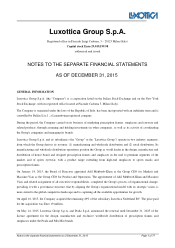 181
181 -
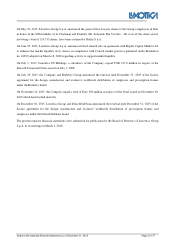 182
182 -
 183
183 -
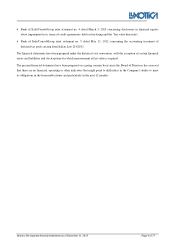 184
184 -
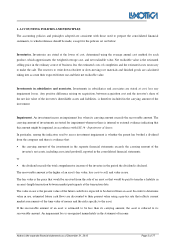 185
185 -
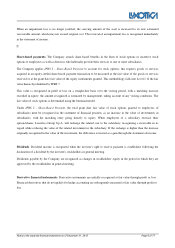 186
186 -
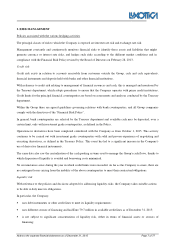 187
187 -
 188
188 -
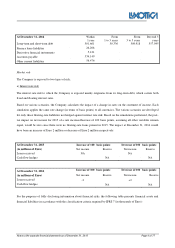 189
189 -
 190
190 -
 191
191 -
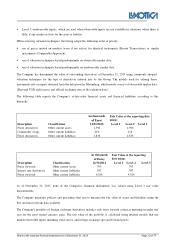 192
192 -
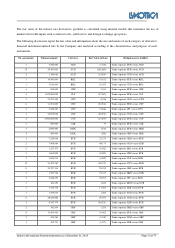 193
193 -
 194
194 -
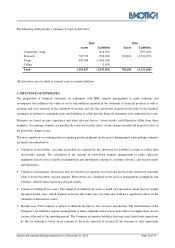 195
195 -
 196
196 -
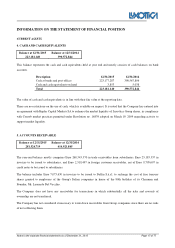 197
197 -
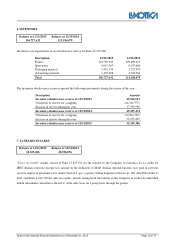 198
198 -
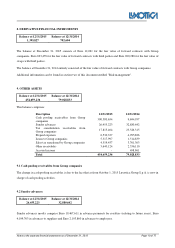 199
199 -
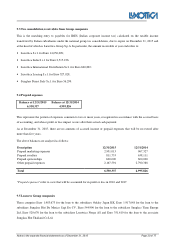 200
200 -
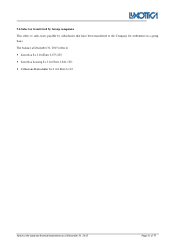 201
201 -
 202
202 -
 203
203 -
 204
204 -
 205
205 -
 206
206 -
 207
207 -
 208
208 -
 209
209 -
 210
210 -
 211
211 -
 212
212 -
 213
213 -
 214
214 -
 215
215 -
 216
216 -
 217
217 -
 218
218 -
 219
219 -
 220
220 -
 221
221 -
 222
222 -
 223
223 -
 224
224 -
 225
225 -
 226
226 -
 227
227 -
 228
228 -
 229
229 -
 230
230 -
 231
231 -
 232
232 -
 233
233 -
 234
234 -
 235
235 -
 236
236 -
 237
237 -
 238
238 -
 239
239 -
 240
240 -
 241
241 -
 242
242 -
 243
243 -
 244
244 -
 245
245 -
 246
246 -
 247
247 -
 248
248 -
 249
249 -
 250
250 -
 251
251 -
 252
252 -
 253
253 -
 254
254 -
 255
255 -
 256
256 -
 257
257 -
 258
258 -
 259
259 -
 260
260 -
 261
261 -
 262
262 -
 263
263 -
 264
264 -
 265
265 -
 266
266 -
 267
267 -
 268
268 -
 269
269 -
 270
270
 |
 |

Notes to the separate financial statements as of December 31, 2015 Page 11 of 77
collateral without lender consent or by more than the established limit of 20% of Group stockholders' equity. Asset
disposals by Group companies are similarly restricted to no more than 10% of consolidated assets.
Failure to comply with the above covenants, followed by failure to comply within the established grace period, could
constitute a breach of credit agreement contractual obligations.
The financial covenants require the Company to comply with established financial ratios. The main such ratios are the
Group's ratio of net debt to consolidated EBITDA and the ratio of consolidated EBITDA to finance expense.
The limits for these main covenants are as follows:
Net Financial Position/Proforma EBITDA < 3.5
EBITDA/Finance Expense >5
Covenants Priority Debt/Stockholders' Equity <20%
An explanation of the meaning of the above covenants is provided below:
• "Net Financial Position / Proforma EBITDA": this is an indicator of the prospective sustainability of debt
repayments; the lower the absolute value, the greater the company's ability to repay the debt (as indicated by the
Net Financial Position) through the generation of gross cash flows from ordinary operations (as indicated by the
amount of EBITDA);
• "EBITDA/ Finance Expense": this is an indicator of financial stress; the higher the value, the greater the
company's ability to produce adequate resources to cover finance expense;
• "Covenants Priority Debt / Stockholders' Equity": this is an indicator of the ability to achieve financial
equilibrium between own and third-party sources of funding; the lower the ratio, the greater the company's ability
to fund itself.
In the event the Group fails to comply with the above ratios, it could be required to make immediate repayment of the
outstanding debt if it does not return within these limits in the period established by the different credit agreements.
The Group monitors the amount of the covenants at the end of every quarter and was in full compliance with them as at
December 31, 2015. The Company also forecasts trends in these covenants in order to monitor future compliance;
current forecasts show that the Group's ratios are below the limits that would trigger a possible breach of contract.
Disclosures relating to the fair value of derivative financial instruments
The Group uses valuation techniques based on observable market data (Mark to Model) to determine the fair value of
its financial instruments; such techniques therefore fall into Level 2 of the fair value hierarchy identified by IFRS 13.
IFRS 13 identifies a three-level hierarchy of valuation techniques as follows:
• Level 1: inputs are quoted prices in active markets for identical assets or liabilities;
• Level 2: inputs are those, other than quoted prices included within Level 1, that are observable for the asset or
liability, either directly (i.e. as prices) or indirectly (i.e. derived from prices);
